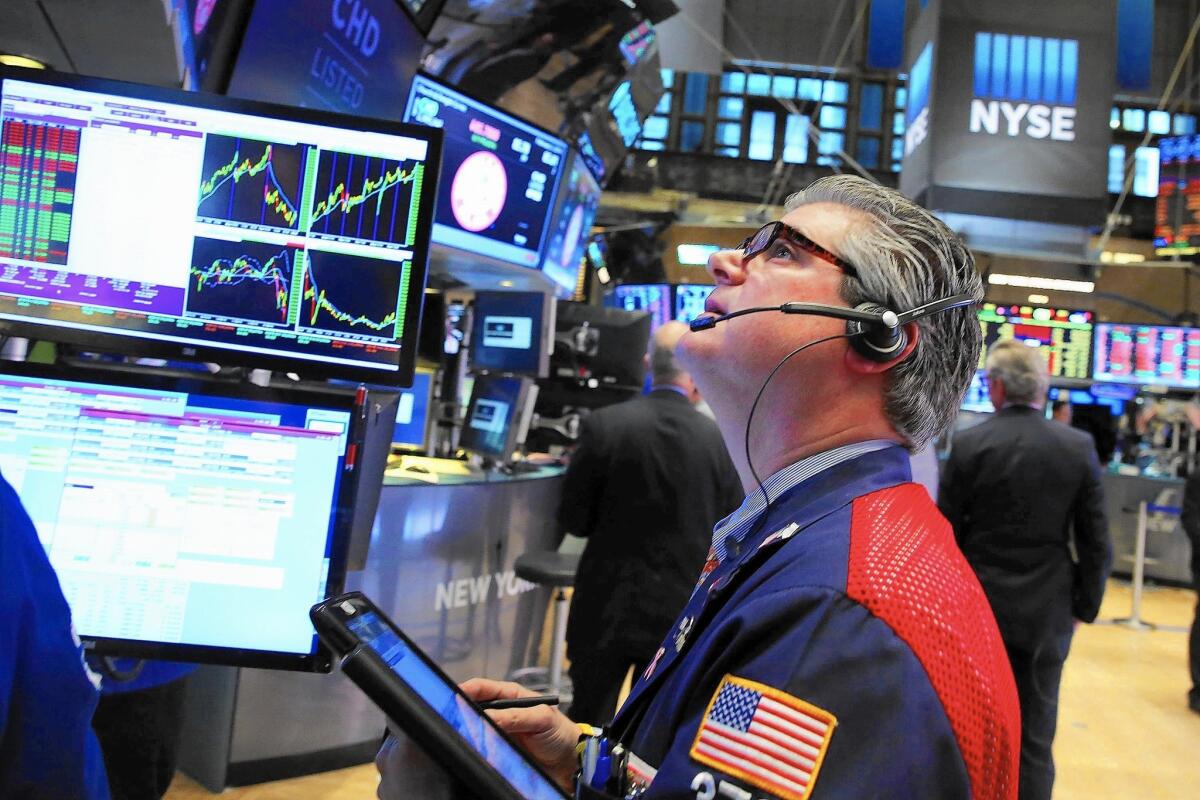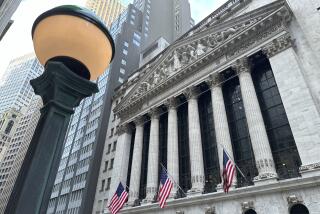What’s ahead for volatile stocks?

Investors pondering where the stock market is headed after its January drubbing might consider the words of Stanley Fischer.
Fischer is vice chairman of the Federal Reserve Board, and in a speech earlier this week, he addressed the question of what steps the Fed might take next regarding monetary policy.
“We simply do not know,” he said. “The world is an uncertain place.”
If the No. 2 officer of the U.S. central bank isn’t sure what’s around the corner with regard to the factors buffeting stock prices — namely sharply lower oil prices, China’s troubles, volatile financial markets and uncertainty about the Fed’s upcoming actions — it’s tough for average investors to find much clarity.
One month obviously does not a year make. Just because the stock market had an awful January in which the benchmark Standard & Poor’s 500 index tumbled 5.1%, a loss for all of 2016 isn’t a sure thing.
That was demonstrated only two years ago. The S&P 500 fell 3.6% in January yet finished 2014 with an 11.4% gain.
But there are bearish trends that can’t be discounted at least for the next couple of months, and that could inhibit a sustained rally, analysts said. They include:
• Investors remain decidedly skeptical about the outlook for higher stock prices — what Wall Street calls negative sentiment — making investors reluctant to bid up stocks.
“There’s a lot of free-form, non-specific anxiety out there that’s not related to one specific event,” said John Canally, chief economic strategist at the investment firm LPL Financial.
• The wild price swings that rocked the market in January are expected to return because the factors behind the volatility, such as China’s slowing economy and lower oil prices, remain in place.
“There will be more choppiness,” said Patrick Schaffer, global investment specialist at J.P. Morgan Private Bank. “We are not through the period of volatility that began in earnest last August when China started the process of devaluating its currency.”
• Some of the most widely held stocks have been punished more than the overall market, leaving them with double-digit percentage drops early this year that aren’t likely to be recouped quickly. They include Boeing Co., American Express Co. and Intel Corp.
On Thursday, the market finished slightly higher. The Dow Jones industrial average rose 79.92 points to 16,416.58 while the S&P 500 index gained 2.92 points to 1,915.45 and the Nasdaq composite index edged up 5.32 points to 4,509.56.
The benchmark light U.S. crude oil for near-term delivery fell 56 cents to $31.72 a barrel on the New York Mercantile Exchange.
Stocks have been on an exceptionally long bull run for the last six-plus years. So investors naturally worry that the market’s recent price declines and volatility could be signaling that the rally is running out of steam.
China’s situation is particularly pressing for investors, because they fret that a substantial slowdown in the growth of China’s economy — the world’s second largest — could cause the economies of other nations to slow as well, leading to lower corporate earnings.
The result: The S&P 500 has lost 6.3% so far this year, and the index has pulled back 10% since reaching a record high of 2,130.82 on May 21.
Some trends bode well for stocks, such as the widely held belief that the U.S. economy will continue its modest growth and is not headed for a recession, analysts said.
“Corporate balance sheets also are in pretty good shape, and the housing area looks fairly good,” said A.C. Moore, chief investment strategist at Dunvegan Associates Inc. in Santa Barbara.
He also noted that the Fed’s benchmark short-term interest rate remains at a low 0.25% to 0.5% even after the Fed’s December increase, the first increase in nearly a decade.
But after the stock market’s January slide, “there’s been damage to investor psychology and it will take time to repair,” Schaffer said. “We’re going to have to see some of these head winds start to abate before we can see a meaningful rally.”
For instance, “we’re not going to get a clear-cut answer any time soon on China,” where the economic woes and gyrating financial markets have sparked sell-offs on Wall Street and other foreign markets, said Michael Baele, senior portfolio manager at U.S. Bank’s Private Client Reserve unit.
“We’re also not going to resolve any time quickly the misalignment between oil production and consumption” that’s led to a global oversupply of oil and the drop in crude prices to 12-year lows, Baele said. Oil traded above $60 a barrel a year ago.
All those bearish trends equate to “a lot of plates in the air, and if one of those plates crashes you could get another 10% down” in the stock market, Canally said.
In the meantime, some analysts recommend that investors look at conventional “defensive” stocks, including utilities, telecommunications firms and consumer staples such as food, beverage and personal-products companies.
Indeed, the S&P utilities index is up 7.2% so far this year and the S&P telecom index has gained 6.8%.
Canally said investors also would do well to keep Fischer’s comments in mind.
“When the Fed doesn’t know” its next step amid all the turmoil, Canally said, “it’s a pretty good sign to everyone else that they probably should not be swinging for the fences in the stock market.”
Twitter: @PeltzLATimes
More to Read
Inside the business of entertainment
The Wide Shot brings you news, analysis and insights on everything from streaming wars to production — and what it all means for the future.
You may occasionally receive promotional content from the Los Angeles Times.











